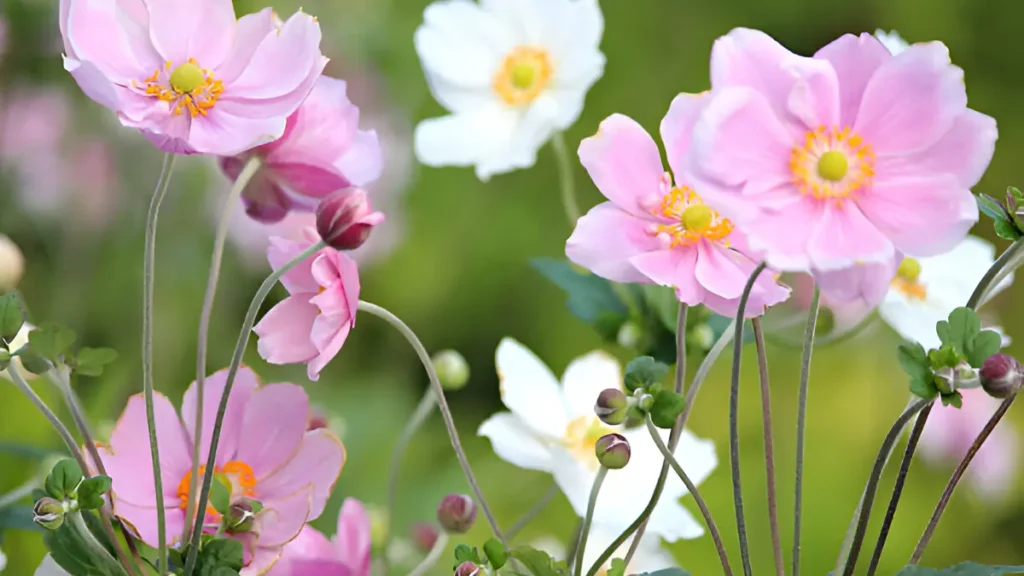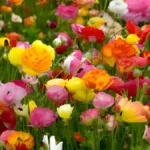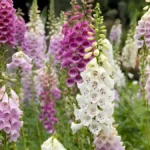The Anemone flower, often known as a windflower, is one of the most stunning flowers to grace any garden. Anemones’ delicate petals and brilliant hues lend refinement and beauty to landscapes and floral arrangements. They prefer moist soil and full to partial sun in more temperate climes. Whether you’re a seasoned gardener or a newbie, growing Anemones flowers is a pleasant experience that yields a flowering wonderland of lovely flowers.
What is an Anemone flower?
The Anemone flower, often known as windflower, is a member of the Ranunculaceae family and has various varieties. The term “anemos” means “wind” in Greek. Despite their wide range of sizes, they all feature base leaf clumps from which fragile blooms are supported by long flower stems. These perennial flowers, which are native to temperate regions, bloom in a range of colors, such as pink, red, blue, purple, and white. Anemones can bloom in spring, summer, or fall, depending on the species, providing a continuous display of color throughout the growing season.
Anemone flower meaning:
Anemone flowers represent expectation, protection, and fragility. In Greek mythology, they are associated with the love story of Aphrodite and Adonis, representing lost love and grief. Red anemones indicate love and sacrifice, white purity and truthfulness, and purple protection and knowledge. Anemones are often connected with the arrival of spring, but they also represent new beginnings and rejuvenation.
Benefits of growing anemone flower in your garden:
Anemones, with their vibrant colors and graceful petals, add elegance to gardens, complementing roses, lilies, and ferns, making them ideal for mixed borders.
Anemones are pollinator-friendly blooms that attract bees, butterflies, and hummingbirds. Their nectar-rich blooms benefit local ecosystems and increase biodiversity.
Most anemones are pest and deer-resistant, making them ideal for gardens prone to wildlife intrusion. Their natural chemicals repel common garden pests.
Anemones make long-lasting cut blooms, which are perfect for floral arrangements. Their delicate yet strong petals make stunning bouquets for both informal and formal occasions.
Types of anemones:
Popular types of anemones include the poppy anemone, Japanese anemones, Grecian Windflower, and wood anemone. Poppy anemones are known for their vivid colors and daisy-like appearance, while Japanese anemones provide beauty in autumn gardens. The Grecian Windflower variety has delicate pink, white, and blue blossoms.
A detailed guide to planting an anemone flower:
Choose a loamy soil with good moisture retention and aeration for anemones. Japanese anemones thrive in partial shade, while Anemone coronaria requires full sun. Plant in protected areas to avoid wind damage to delicate stems.
Make sure the soil is supplemented with organic matter, such as compost or well-rotted manure, before planting. For anemones, the pH of the soil should be between 6.0 and 7.0.
To promote sprouting in anemones, soak bulb-like corms in lukewarm water for four to six hours. Plant them immediately to prevent drying out and ensure healthy growth.
Plant corms 2-3 inches deep, 4-6 inches apart for optimal air circulation, and water the planting area after planting.

Anemone flower care: crucial advice
Anemones require frequent, moist irrigation, preferably once a week. When the foliage turns yellow, watering decreases, if there’s little rainfall, irrigate the soil to maintain moisture. Wood anemones, like A. nemorosa, die in midsummer and don’t require water until they regrow in the fall, indicating unique water requirements for different species.
Anemones prefer rich, fertile soil. In many circumstances, these blooms will thrive in organic-rich soil with a fresh coating of compost added each year. Fertilize once in the spring and fall with a balanced, slow-release fertilizer for lush growth and larger blooms.
Anemones can be kept neater by trimming back faded blooms at the end of the season, stopping self-seeding, and trimming back leaves once they turn brown. This helps prevent the plants from spreading to other parts of the garden and maintains a tidy environment.
Foliar nematodes, which feed on anemone leaves, can damage plant cells, causing deformed leaves and flowers. Treatment is challenging, but nematodes can be eliminated by removing plants and heating the soil with solarization. Regular tilling and sunburning can also help eliminate nematodes. Fungal leaf spots, downy mildew, and powdery mildew can also affect anemones, although these diseases are rarely severe.

Did you know that these plants contain a chemical known as protoanemonin, which makes all parts of the anemone plant moderately dangerous to humans and mildly toxic to animals. It can irritate the skin of both humans and pets.
Conclusion:
The anemone flower is an excellent choice for any gardener who wants to add color, elegance, and adaptability to their environment. Whether you choose spring, summer, or fall-blooming species, these magnificent flowers will convert your yard into a colorful haven. With proper care, soil preparation, and upkeep, anemones will provide you with seasonal beauty year after year.
Certainly! If you’d like to learn more, please consider following our WhatsApp Channel, Facebook, Instagram, YouTube, Twitter, and Pinterest.
A frequently asked questions:
Q1: What is an anemone flower in Greek mythology?
A1: In Greek mythology, the anemone flower represents the tragic love story of Aphrodite and Adonis. It is claimed to have emerged from Adonis’ blood when he was gravely wounded, representing love, loss, and grief.
Q2: How do I use anemone flowers in my garden?
A2: Anemone flowers provide brilliant color and texture to your landscape. They thrive in well-drained soil with partial to full sun. Plant them in borders, rock gardens, or pots, and combine them with spring bulbs or perennials to create a stunning seasonal show.



